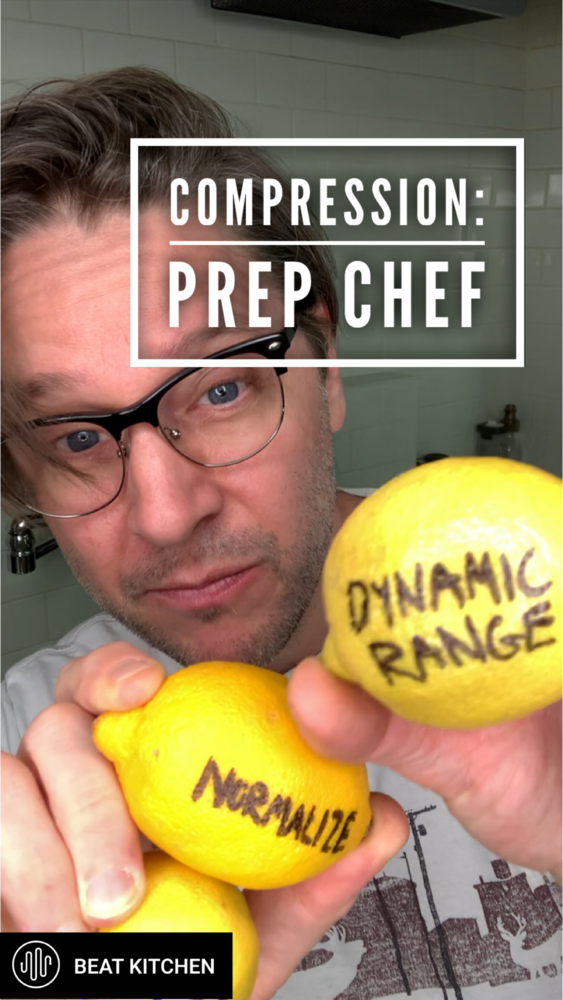Today at Beat Kitchen, we’re going to turn up the heat on our conversation of compression. We’re going to talk about dynamic range, normalizing, and I’m going to throw in logarithms. This buys you a ticket into the I understand compression club, so bear with me.
It’s going to take 60 seconds. Let’s go. You can cut something in half as many times as you want, and you never end up with nothing.
And we’re not really talking about lemons, right? That’s why if you’re thinking about gain as being linear, you’re thinking about it wrong. It’s also why the bottom of your fader is marked infinity and not zero.
There is theoretically no limit to the amount you can turn it down. That’s a logarithm. There’s also no theoretical limit to the amount that you can turn something up.
The problem lies in the container. It doesn’t matter if it’s analog or digital. Once you fill up that container, you’re done.
Inside of a container, you can only make something as loud as the loudest peak. Any louder, and you lose something. If you’re thinking about it linearly, you’re thinking about it like this.
But when you attenuate, that’s not the way things move. Think back to the lemon. You can always make something half as loud.
When that goes down by half, so does that. But it doesn’t disappear completely. Turn it up, you’ll find a fixed ceiling, and you can only go as high as is allowed by the highest peak.
That’s normalization. The difference between the loudest bit and the softest bit, that’s dynamic range. And if we reduce the dynamic range, we can fit the whole thing in a smaller container.
And that’s where we start talking about compression. If you learned something like this post, follow us to see what’s next. And if someone who belongs in a Beat Kitchen class, get in touch.

